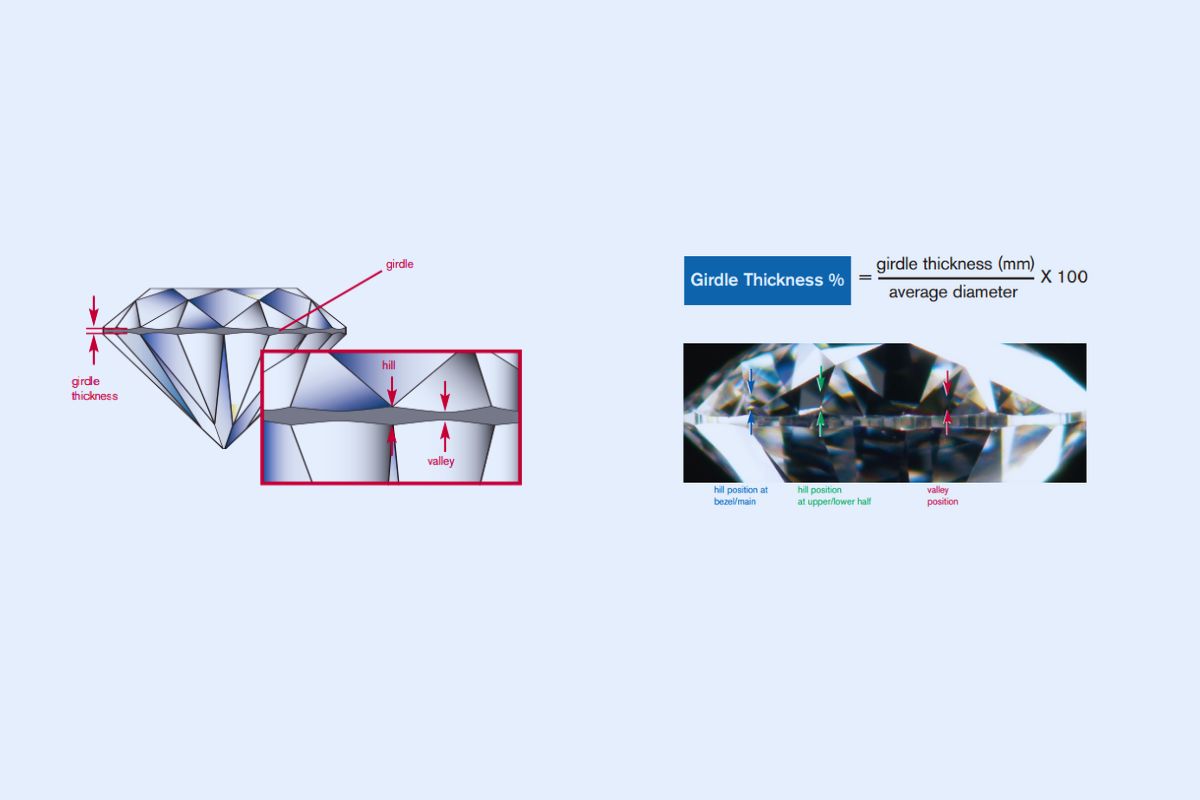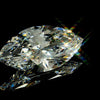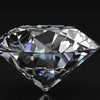
Diamond Girdle Thickness: Optimal Measurements for Durability and Brilliance
In my experience, the girdle of a diamond is an essential feature that often doesn't receive as much attention as the cut, color, or clarity. However, it plays a significant role in the overall quality and durability of the stone. The girdle is the thin perimeter of a diamond that separates the top, known as the crown, from the bottom, known as the pavilion. Its thickness can vary and is typically described in terms ranging from extremely thin to extremely thick.
Table Of Contents
- Understanding Diamond Girdle Thickness
- Girdle Thickness in Diamond Cuts
- Grading and Measurement Standards
- Girdle Finishes and Effects
- Selecting Diamonds by Girdle Thickness
- Girdle Thickness and Jewelry Design
- Care and Maintenance Related to Girdle Thickness
- Economic Impact of Girdle Thickness
- Advanced Topics in Girdle Thickness
- Frequently Asked Questions
I understand that the thickness of the diamond girdle affects both the diamond's appearance and its structural integrity. A girdle that is too thin can be prone to chipping, whereas one that is too thick can detract from the diamond's brilliance and make it appear smaller than its actual weight would suggest. As a result, many experts and aficionados seek a girdle that is neither too thin nor too thick. The industry standard describes a preferred girdle thickness as medium, which strikes a balance between vulnerability to damage and aesthetic appeal.
When assessing diamonds, I pay close attention to the girdle thickness because it's a delicate balancing act that impacts not just the diamond's beauty, but its durability over time. The ideal girdle thickness should protect the stone while maintaining its celebrated sparkle. This careful consideration ensures the longevity and brilliance of the diamond, making it an enduring choice for fine jewelry.
Understanding Diamond Girdle Thickness
As we explore the intricacies of diamonds, girdle thickness is a crucial aspect that directly contributes to both the diamond's aesthetics and durability. This section will focus on what the girdle thickness is, its varying terminologies, and its impact on the overall resilience of a diamond.
Definition and Importance
The girdle is the thin perimeter of a diamond that separates the crown, or top, from the pavilion, or bottom. The thickness of this girdle can be categorized in several ways, typically ranging from extremely thin to extremely thick. The importance of this feature lies in its ability to protect the diamond's edge from chipping and its influence on the diamond's overall appearance.
Girdle Thickness Terminology
Terminology used to describe girdle thickness can vary; however, the Gemological Institute of America (GIA) provides a standard scale:
- Extremely Thin: Risk of chipping is increased.
- Very Thin: Provides slightly better protection than extremely thin girdles.
- Thin: Often considered sufficient and less prone to chipping.
- Medium: Ideal for balancing durability and aesthetic appeal.
- Thick to Very Thick: Can appear overly broad, possibly impacting brilliance.
- Extremely Thick: May affect how the diamond is set and can negatively impact reflectivity.
Role in Diamond Durability
The girdle's thickness plays a substantial role in a diamond's durability. When the girdle is too thin, the likelihood of the diamond chipping or breaking on impact is greater, especially during the setting process or daily wear. Conversely, a thick or extremely thick girdle might offer more protection but can detract from the diamond's beauty by making it appear disproportionate. Therefore, finding a balance is key to a diamond's longevity and visual allure. The optimal girdle thickness should protect the diamond without compromising on the much-desired brilliance and fire synonymous with a well-cut gemstone.
Girdle Thickness in Diamond Cuts
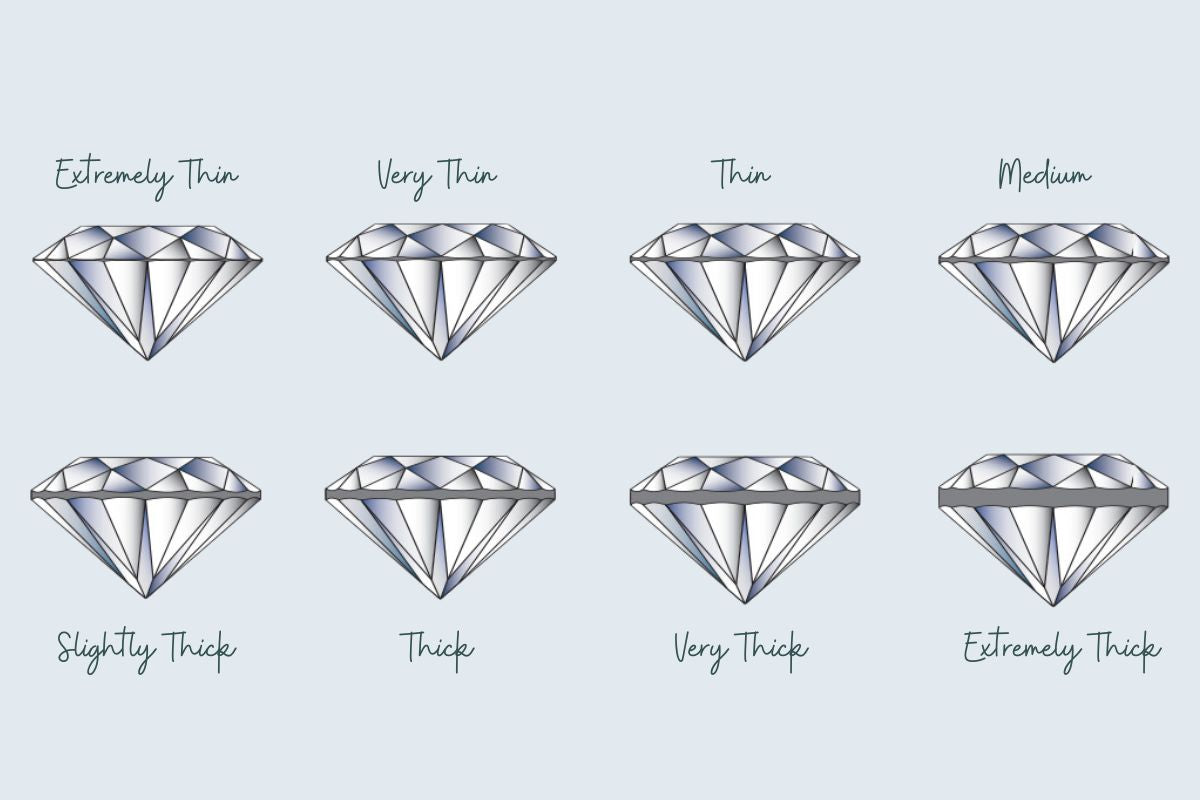
In my examination of diamond cuts, I recognize the crucial role of girdle thickness. It influences not just the aesthetics but also the durability of the diamond.
Impact on Different Shapes
The girdle is the thin perimeter that separates the crown, the top portion of a diamond, from the pavilion, the bottom part. When I consider the impact of girdle thickness on different shapes, I see that it varies. For example, in a pear-shaped diamond, the girdle should be carefully assessed to prevent chipping, especially at the pointed end. With fancy shapes like marquise, heart, or princess cuts, a very thin girdle can lead to vulnerability at the tips, whereas a thick girdle may hide weight and cause the diamond to appear smaller than its carat weight would suggest.
Girdle Thickness Considerations for Specific Cuts
For specific cuts like the round brilliant cut – often held to the benchmark of the "ideal" cut – girdle thickness can greatly affect light performance. A proper balance is fundamental: too thick, and the diamond may carry unnecessary weight; too thin, and it risks structural integrity. In princess cut diamonds, I recommend a girdle that's neither too thin nor too thick, maintaining the symmetry and protecting the corners that are prone to chipping when set in a ring. Consistency in girdle thickness also contributes to the diamond's overall proportions and symmetry, essential for the premium appearance and value of diamonds.
Grading and Measurement Standards

When I discuss diamond girdle thickness, it's essential to consider the grading and measurement standards set by the leading gemological institutions. They use specific scales and methodologies to determine the thickness grades that are crucial for valuations and certificates.
GIA and AGS Grading
The Gemological Institute of America (GIA) and the American Gem Society (AGS) are renowned for their rigorous grading systems. These grading reports are essential for anyone looking to assess a diamond's girdle thickness. The GIA classifies girdle thickness into categories such as Extremely Thin, Very Thin, Thin, Medium, Slightly Thick, Thick, Very Thick, and Extremely Thick. Similarly, AGS uses its own scale ranging from Ideal to Poor, which includes an assessment of girdle thickness as part of the overall cut grade.
- GIA Girdle Thickness Ranges:
- Extremely Thin
- Very Thin
- Thin
- Medium
- Slightly Thick
- Thick
- Very Thick
- Extremely Thick
Understanding Grading Reports
Grading reports from institutions like GIA or AGS provide a comprehensive analysis of a diamond. These certificates describe the girdle thickness as one among many important characteristics. As a knowledgeable reader, it is important for me to understand where to find this information on a grading report and how it impacts the overall quality and grade of the diamond.
Key Sections on a Grading Report:
- Measurements
- Cut grade
- Girdle thickness
- Additional grading factors
Measurement Techniques
The measurement of a diamond's girdle thickness is a precise process. Laboratories employ high-tech equipment to determine the thickness in relation to the diameter of the diamond. The results are then used to assign an appropriate grade. This measurement can be performed at various points around the diamond, ensuring a detailed and accurate grading. For example, the thickness is gauged at the narrowest and widest parts of the girdle, providing a range that becomes part of the final report.
- Measurement Tools and Techniques:
- Optical measuring devices
- Computer-aided design (CAD) systems
- Examination at multiple points for precise grading
By familiarizing myself with these standards and techniques, I gain a clearer understanding of how diamond girdle thickness is graded and the significant role it plays in diamond valuation.
Girdle Finishes and Effects
The finish of a diamond's girdle can significantly affect its light performance and overall appearance. Whether polished, faceted, or bruted, each type has distinct effects on a diamond's aesthetics and structural integrity.
Types of Girdle Finishes
Polished Girdles: A polished girdle has a smooth, reflective surface. It is essentially a continuation of the diamond's facets. I've seen that a polished finish tends to have a negligible effect on a diamond's brilliance or fire. However, for fancy colored diamonds, a polished girdle can enhance the stone's color saturation by reflecting the body color within the diamond.
- Advantages:
- Creates a seamless transition between the girdle and facets
- Can intensify body color in fancy colored diamonds
Faceted Girdles: Featuring multiple small facets, a faceted girdle is more intricate than a simple polished one. I recognize that this finish can contribute to the diamond's sparkle (scintillation), as it allows for additional surfaces to reflect light.
- Advantages:
- Adds to the diamond's scintillation
- Often preferred for aesthetic reasons
Bruted Girdles: Bruted, or unpolished girdles, have a frosted appearance. This method was more common in older diamonds. While a bruted girdle wouldn't necessarily detract from the diamond's light performance, it's more about preserving the weight during the cutting process.
- Advantages:
- Retains more carat weight
- Has a vintage appeal
Influence on Light Performance and Aesthetics
The degree to which a girdle finish impacts light performance depends on multiple factors. A girdle that is too thick or too thin can negatively impact a diamond’s cut grade. I know that the optimal girdle thickness should neither be so thin that it's prone to chipping, nor so thick that it affects the stone's proportion and, consequently, its light reflection.
- Polished and Faceted Girdles: Both can enhance light reflection to varying extents, thereby contributing to the diamond's brilliance.
- Bruted Girdles: Typically do not affect light performance but may be less visually appealing to those who prefer a more polished and refined look.
The appearance of the girdle can affect the overall aesthetic appeal of a diamond. While a polished girdle is often not noticeable, a faceted girdle can add an element of design that appeals to certain tastes. A bruted girdle might be less attractive to those seeking a modern finish but could appeal to someone looking for an antique look. In terms of fancy colored diamonds, the girdle finish can play a role in perceived color, which is crucial for the stone's value and appeal.
Selecting Diamonds by Girdle Thickness
When I assess diamonds, girdle thickness plays a crucial role, particularly in how it affects light performance and the overall balance of the stone's attributes.
Effects on Overall Diamond Appearance
The girdle is the thin perimeter that divides the crown (top) of the diamond from the pavilion (bottom). If the girdle is too thin, it might be prone to chipping, whereas a girdle that is too thick can unnecessarily increase the overall weight of the diamond, negatively impacting its appearance. A well-proportioned girdle allows for optimal light return, which enhances the brilliance and fire of the diamond. It's also key for maintaining the diamond's symmetry and proportions, which are significant components of the stone's cut quality.
Balancing Thickness with Diamond Attributes
When selecting a diamond, I strive for a girdle that complements the diamond's other characteristics, such as clarity, color, and cut quality. A diamond's girdle shouldn't overshadow its overall appearance but instead, should support the stone's ability to reflect light evenly. This balance is critical for ensuring the diamond has a harmonious interaction with light, contributing to its visual appeal. For superior cut quality, I recommend a girdle thickness that is neither too thick nor too thin but instead, matches the specific proportions of the diamond for an ideal light performance.
Girdle Thickness and Jewelry Design

In designing jewelry, particularly engagement rings and earrings, the girdle thickness of a diamond plays a crucial role. It influences not only the diamond's setting security but also the overall aesthetic and functionality of the finished piece.
Role in Diamond Setting
When I consider a diamond's setting, the girdle thickness is a fundamental aspect that demands attention. It's the intersection where the crown (top) and pavilion (bottom) meet, and it must be sturdy enough to secure the diamond without risking damage. A girdle that is too thin can lead to chipping, especially during the setting process, which may compromise the integrity of a piece like an engagement ring. Conversely, if the girdle is overly thick, it can disproportionately increase the diamond's carat weight without noticeably enhancing its appearance, leading to a higher price without the benefit of a visibly larger stone. In my creations, I strive for a balance—a medium girdle thickness is often ideal, ensuring the setting's strength without unnecessarily elevating the weight.
- Ideal cut diamonds: Often feature a balanced girdle thickness to optimize light performance without compromising durability.
Impact on Earrings and Rings
Earrings and rings endure frequent movement and contact, so the diamond's girdle thickness must be considered to maximize longevity and wearability. For earrings, I assure the girdle is thick enough to sustain daily wear yet not so thick that it unnecessarily increases the weight, causing discomfort to the ears. Rings, especially ones that are worn daily like engagement rings from James Allen, must have a girdle that withstands the constant contact and varied impact of daily activities. Here's a simple breakdown of how girdle thickness impacts ring design:
- Engagement rings: Require a balanced girdle thickness to protect the stone during everyday wear.
- Ring size & weight: A diamond with a very thick girdle might increase the ring's overall weight, affecting wearability.
- Appearance: The girdle should not be visible when the diamond is viewed from above in its setting, preserving the desired aesthetic.
Care and Maintenance Related to Girdle Thickness
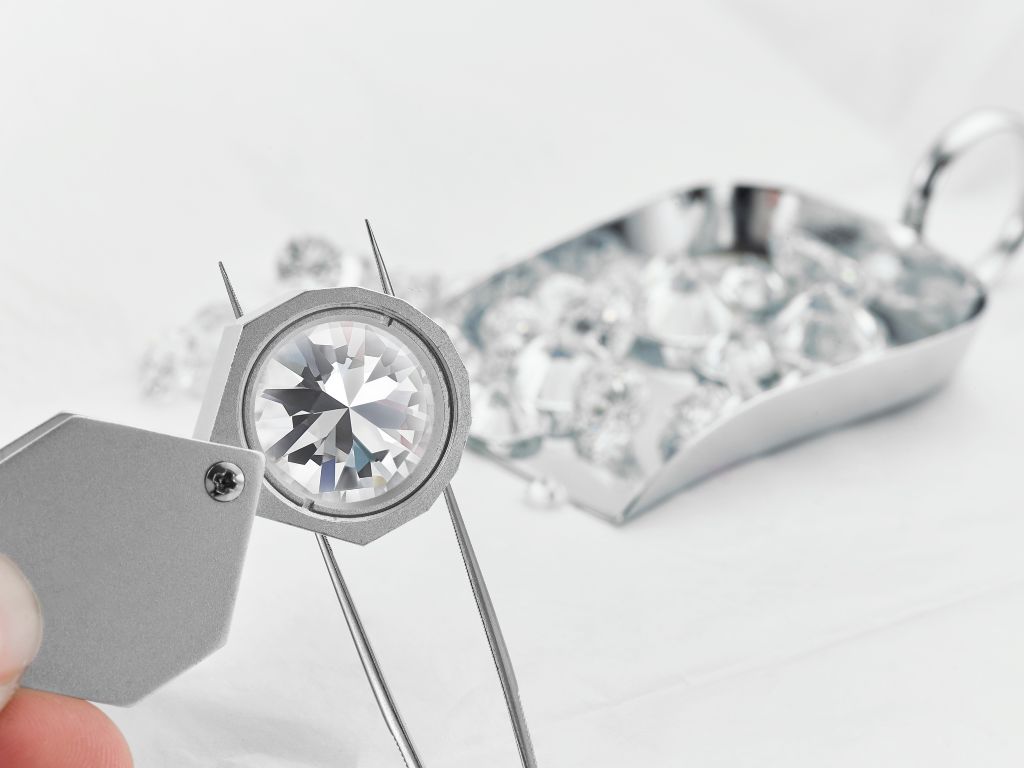
When considering the care and maintenance of a diamond's girdle thickness, I focus on ensuring longevity while avoiding damage due to everyday wear. The girdle's thickness can greatly impact both the durability and maintenance requirements of a diamond.
Longevity and Everyday Wear
A diamond's girdle is the dividing line between the crown and the pavilion, which plays a pivotal role in the stone's longevity. Thin girdles are more prone to chipping, which can occur even during normal wear. I recommend that settings for diamonds with thin girdles should protect the girdle without placing additional pressure on it.
- Care for Thin Girdles:
- Use protective settings, such as bezel or V-prong.
- Avoid hard blows to the edge of the stone.
Conversely, thick girdles may add unwanted weight to a diamond and affect its balance. However, their robustness typically results in enhanced durability. For these, a balance must be found to ensure the added protection does not outweigh the aesthetics.
- Care for Thick Girdles:
- Select settings that do not accentuate the girdle's thickness.
- Regularly inspect for signs of imbalance or misalignment in the setting.
Handling Thin and Thick Girdles
Understanding the proper handling of both thin and thick girdle diamonds is integral to maintaining their condition. When cleaning a diamond with a thin girdle, I am careful to gently brush around the girdle's edge to reduce the risk of damage.
- Handling Tips for Thin Girdles:
- Clean with soft, non-abrasive brushes.
- Inspect the girdle regularly for signs of wear or damage.
For thick girdle diamonds, cleaning is less precarious, but attention must be given to the potential build-up of residues that can gather in deeper girdle proportions.
- Handling Tips for Thick Girdles:
- Focus cleaning efforts on removing residue from the girdle crevices.
- Ensure the diamond setting is inspected to prevent undue stress due to the thicker girdle.
In my experience, these factors are crucial in caring for diamonds and preserving their beauty and structural integrity over time. Whether dealing with thin or thick girdles, appropriate care and regular maintenance will support their longevity and keep them sparkling for years to come.
Economic Impact of Girdle Thickness

In my experience, the thickness of a diamond's girdle can significantly influence its economic value. A well-proportioned girdle can impact both the durability and the beauty of a diamond, affecting its price point in the market.
Girdle Thickness and Diamond Value
The girdle thickness of a diamond plays a pivotal role in determining its overall value. A diamond with a very thin girdle might be more susceptible to chipping, reducing its desirability among buyers, who often prioritize durability in their purchase. Conversely, a diamond with an excessively thick girdle can appear smaller when viewed from above, potentially deceiving customers who seek a balance between size and price. My observations suggest that diamonds with girdles that are neither too thin nor too thick — often described as "medium" or "slightly thick" — tend to hold their value better in the long term.
Pricing Considerations
When pricing diamonds, I pay close attention to girdle thickness. A medium girdle thickness is typically ideal and can command a premium in the market; however, variations in girdle thickness may necessitate adjustments to the price. For example:
- Thin to Very Thin: May reduce price due to increased risk of damage.
- Slightly Thick to Thick: Generally acceptable, minimal impact on price.
- Very Thick: May reduce the value due to the diamond appearing smaller than its actual weight, affecting the buyer's budget considerations.
In essence, the girdle thickness should be factored into the pricing strategy to accurately reflect the value of the diamond in relation to its cut quality and aesthetic appeal.
Advanced Topics in Girdle Thickness
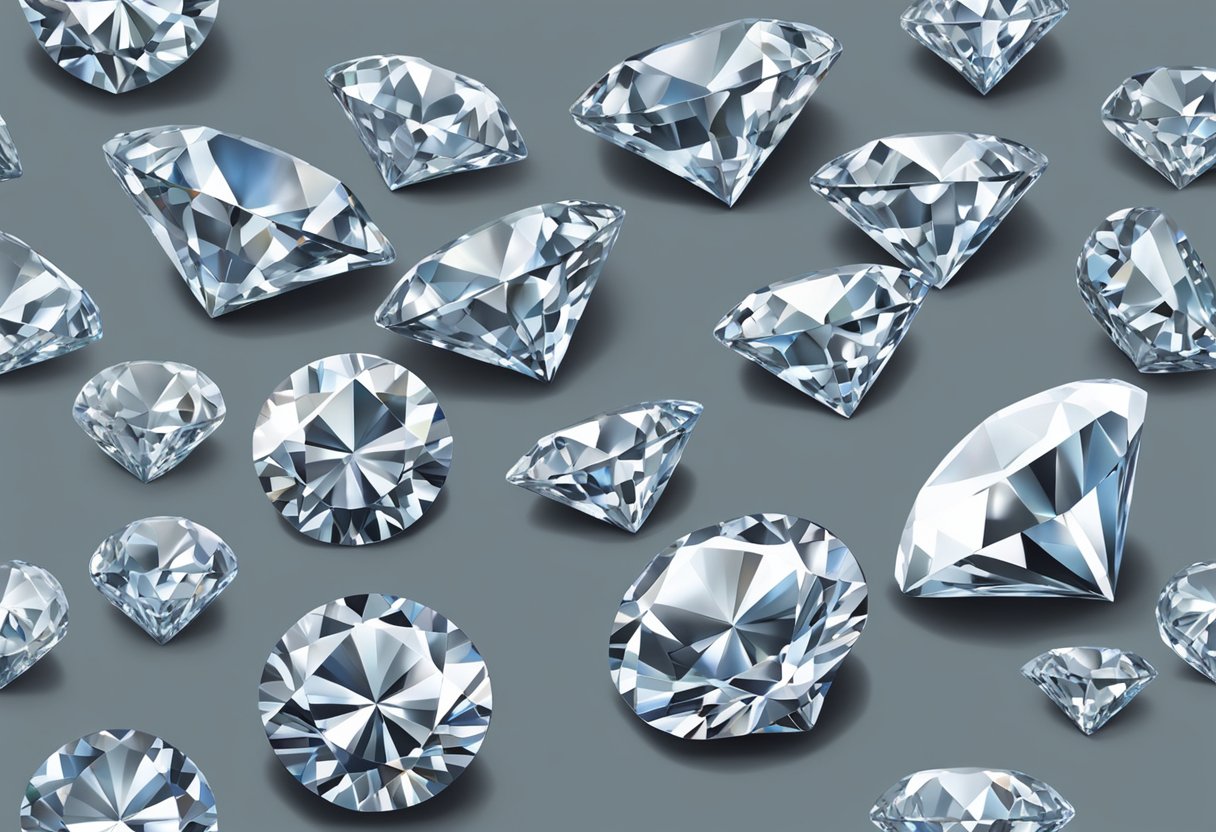
In exploring the advanced topics of diamond girdle thickness, I'll examine the precision required in crafting and the innovative techniques that enhance girdle design. Achieving the ideal balance between durability and aesthetics is essential for the girdle, which helps determine the diamond's overall appearance and structural integrity.
Technical Aspects of Crafting Girdles
When I consider the technical aspects of crafting girdles, I focus on the precise control required to perfect the girdle width. This width, which defines the outer edge of a diamond, must be uniform to ensure stability without unnecessarily adding weight to the diamond. Expert cutters play a crucial role in this process, delicately considering the girdle's position and width in relation to the stone's depth and overall proportions. The corners warrant special attention to prevent chipping, with the round brilliant faceted girdle serving as a prime example of balancing the interplay between width and corner styling.
The introduction of laser inscription to the girdle provides both a means of identification and a testament to the sophisticated level of detail achievable. Inscribed girdles demonstrate the cutter's ability to incorporate subtle, yet critical elements without compromising the structural integrity. Moreover, finishes on the girdle range from polished to faceted, each offering a unique interplay of light and a distinct aesthetic appeal.
Innovations in Girdle Design
Innovation in girdle design has elevated the practice of diamond cutting to new heights. One of the more cutting-edge developments is the advent of bruting technologies that shape the girdle's circumference with unprecedented precision. Traditional methods risked inflicting a knife-edge on the girdle, which increased the possibility of damage. Now, modern techniques have virtually eliminated this risk, enabling the crafting of sturdy yet elegantly thin girdles.
My approach to girdle design incorporates advancements that not only consider the immediate visual appeal but also foresee the diamond's longevity. New faceting patterns and implementations of nuanced finishes contribute to the diamond's brilliance while maintaining the girdle's integrity. It's a delicate balance that demands confidence in each decision made, from the position of the cut to the final inscription that signals the completion of a meticulously crafted gem.
Frequently Asked Questions
In this section, I’ll address common queries related to diamond girdle thickness.
What determines the ideal girdle thickness for a diamond?
The ideal girdle thickness for a diamond is determined by balancing the need for protection from chipping and enhancing the stone's aesthetic appeal. Each diamond shape and cutting style may necessitate a different ideal thickness.
How does girdle thickness impact a diamond's overall appearance and durability?
A girdle that's too thick can make a diamond appear smaller than its carat weight suggests, while one that's too thin can increase the risk of damage. The right girdle thickness ensures a diamond's brilliance isn't compromised and its edges are protected.
What are the preferred girdle thickness ranges for different diamond cuts?
Preferred girdle thickness can vary: for round cuts, a thin to medium girdle is often desirable, while princess cuts can benefit from a slightly thicker girdle to protect the corners. Each cut has a range that optimizes the diamond's security and beauty.
Can the girdle thickness affect the value of a diamond?
Yes, the girdle thickness can affect a diamond's value. A girdle that's too thin or too thick can detract from the diamond's appearance and durability, potentially reducing its market value.
Why is girdle thickness important when selecting a diamond?
Girdle thickness is crucial because it plays a significant role in the diamond's structural integrity and can influence how the diamond is set in jewelry. A well-proportioned girdle can prevent damage and enhance the stone's visual appeal.
How is diamond girdle thickness measured and categorized?
Diamond girdle thickness is usually measured by a gemologist using specialized tools and is categorized from 'extremely thin' to 'extremely thick.' This categorization helps in assessing a diamond's quality and in making informed purchasing decisions.
Checkout some of our top collections:
Leave a comment
Please note, comments must be approved before they are published.
